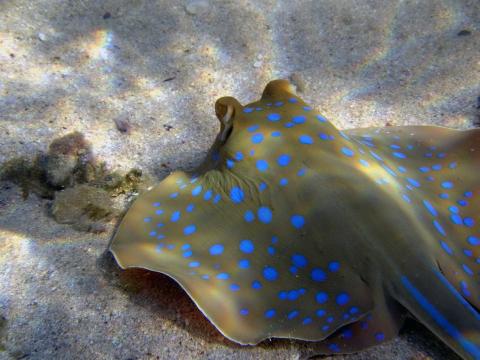Genetic diversity in wild species: important yet invisible
Biological diversity is important to human societies because wild species provide valuable services, such as aiding in retention of soil moisture, pollenating many crops, and contributing to pest control. In addition to the diversity among ecosystems and diversity of species, individuals within species differ genetically from one another. Some of this diversity allows certain individuals to survive and reproduce better than their colleagues. When the environment changes, through arrival of new competitors, pathogens or changing climate, these differences among individuals are the raw material enabling populations to adapt; natural selection favors the individuals with characteristics that make them more successful than their peers. When faced with environmental decline, as in increasingly unfavorable climate, a population with adequate genetic variation may adapt to the new conditions. Otherwise, the population must move to a new area with suitable conditions, or die out.
Convention on Biological Diversity (CBD) recognizes importance of genetic diversity
The CBD, to which EU countries are signatories, recognizes the fundamental importance of genetic diversity within wild species. With the acceptance in 2022 of the Kunming-Montreal Global Biodiversity Framework, signatory countries are required to report the proportion of populations of each species that likely hold adequate genetic diversity. While this constitutes a substantial step towards the recognition of genetic diversity’s importance and need for monitoring, genetic diversity is addressed isolated from other factors affecting biodiversity, such as climate change.
What constitutes monitoring the genetic diversity of wild species?
Genetic monitoring of wild species is done in several ways, each with a different objective. Category I genetic monitoring uses molecular methods to identify which species have contributed to the DNA in a sample. This includes, for example, the identification of the source species in a sample of bushmeat. Category II monitoring, in contrast, produces indicators of the genetic diversity in populations of a species, and sampling and analysis are repeated at intervals, producing a temporal trajectory of population genetic diversity (PGD).
Monitoring genetic diversity can couple science to conservation during climate change
Monitoring PGD can alert conservationists and managers to loss of genetic variation in populations at risk from climate change, thus enabling timely management engagement. These genetic data can complement demographic information on numerical population trends. Monitoring PGD is increasingly feasible because of declining costs of genetic analysis. These genetic data can help focus efforts to improve habitat quality and connectivity where they are most needed.
Climate impacts on species’ genetic diversity need increased attention
A wealth of research exists to indicate that climate change will impact habitat suitability for many species, likely leading to local extinctions, changes in species’ geographic distributions, and altered ecosystem service delivery. Population genetic variation has reduced these impacts in computer simulations of climate change effects on species. Populations also vary in their exposure to risk from climate change, with ones on the ‘trailing edge’ of suitable conditions having relatively high risk. Not surprisingly, advantageous genetic variants for the hotter, drier climate of the near future are likely found where climate is currently near species tolerance limits for hot/dry conditions. Nonetheless, advantageous variants can be lost through a variety of processes. Monitoring of PGD can help indicate when management action is necessary to conserve the valuable genetic variation held in these populations.
Expanded genetic monitoring needed to detect impacts of climate change
Recent research indicates that monitoring of PGD will need substantial expansion to address the potential impacts of climate change on genetic diversity. Notably, monitoring effort in EU countries has little relation to the risks posed to species by climate change, and many EU countries have conducted little or no genetic monitoring. Further, while larger EU countries have generally expended greater effort on genetic monitoring than have small countries, little genetic monitoring has been conducted in southeastern Europe, despite this area having greater biological diversity than northern Europe. Monitoring effort of countries is also not linearly coupled to national wealth, and shows little relationship to species’ risk from climate change. Most effort has been directed towards large charismatic mammals, which generally have wide climate tolerances, broad geographic distributions, and face little risk from climate change. In contrast, little genetic monitoring focuses on amphibians, although this is a group of species potentially facing broad climate change impacts.
Expanded monitoring of PGD: Essential characteristics
Monitoring of PGD can be improved and made more informative of the impacts of climate change. Monitoring needs to be focused on the species and populations first to face climate change impacts, and span the entire climate gradients species occupy. That means that populations near the limits of species’ environmental tolerances need to be included for monitoring. Thus, monitoring programs should often be international and collaborative. Genetic variation also needs to be evaluated across species’ entire genomes, in order to identify beneficial genetic variants and their geographic distributions. Predictions from computer models of climate change impacts on genetic variation should be tested against real genetic trends. Above all, relevant stakeholders, including national and regional authorities, research communities, consultancies, and conservation organizations need to be included early when planning PGD monitoring.





